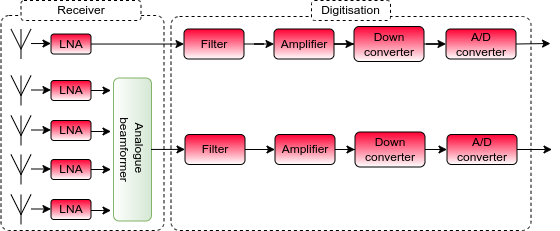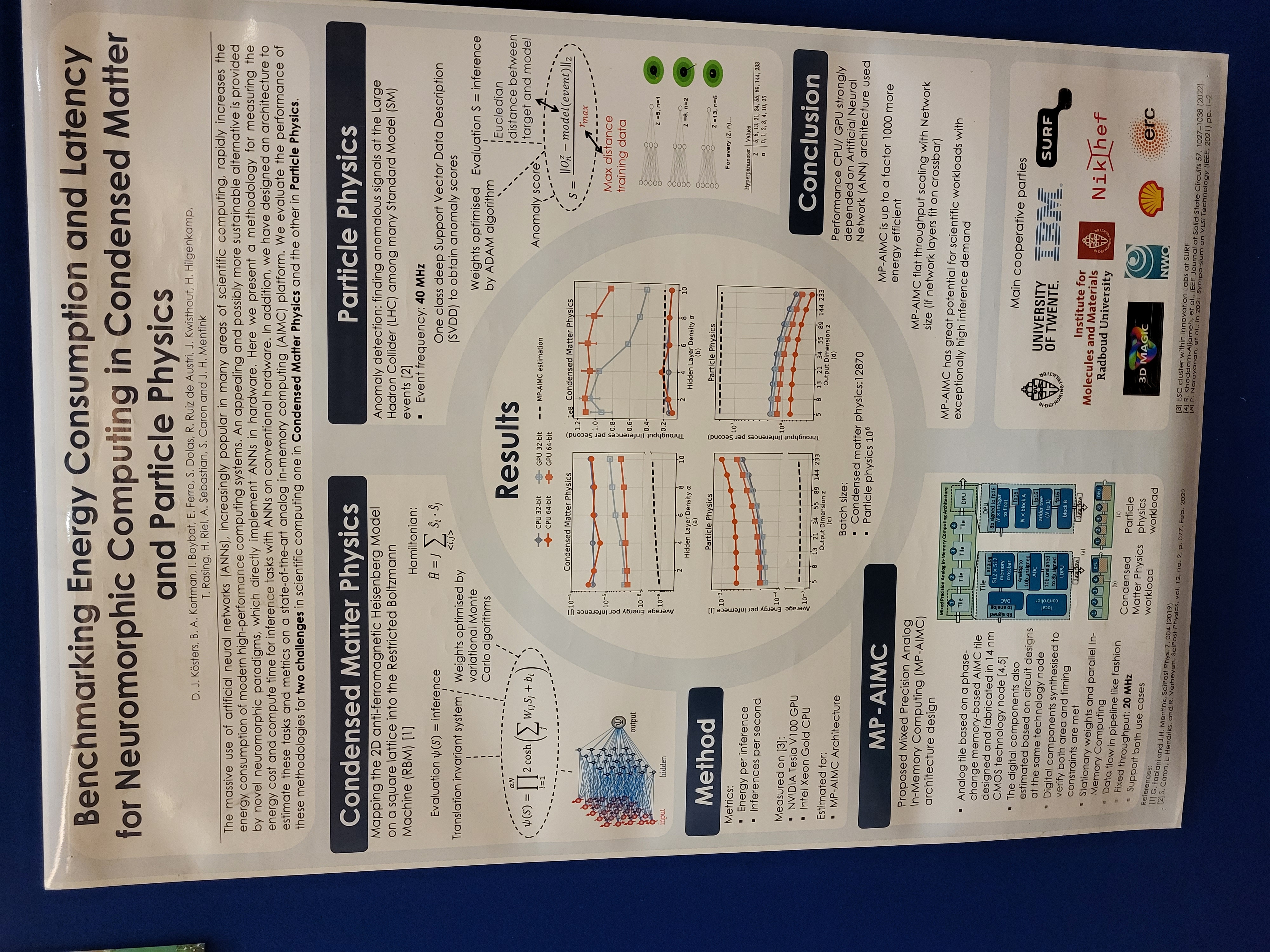Chris Broekema (broekema@astron.nl)
Introduction
A radio telescope can be considered a streaming digital signal processing system. The sky is sampled with a receiver, and almost immediately analogue data is converted to the digital domain so we can conveniently transport it without loss and use general purpose commodity hardware to do signal processing on the result. This is shown in the schematic overview below.
fig 1. A high-level overview of a typical large-scale distributed radio telescope (from Broekema 2020)
fig 2. Receiver signal processing in more detail. Sampled data is conditioned in the analogue domain (an analogue beamformer and filter are shown) at the receiver and almost immediately converted to the digital domain.
Fig 3. Receiver digital signal processing. Once the data is converted to the digital domain, spectral (a polyphase filter is shown) and spatial (digital beamforming) filtering can be done.
fig 4. A schematic overview of the centralized correlator and beamformer functions. Data from all receivers is filtered and combined either in a coherent addition (the beamformer) or by multiplying each receiver pair (correlator).
The vast majority of the processing is digital in nature, generally using signed complex integers. In early instruments very small words (up to single bits) were used, in state of the art telescopes words are generally in the order of 10-12 bits. For centralized digital signal processing, alternatives using general purpose computing systems are viable, in particular for low-frequency telescopes such as LOFAR. In such cases, integers are converted to floating point values due to FPUs (FLoating Point Units) being massively more available and powerful in this class of computing. Novel AI-processing units, such as tensor cores, are used in these processing steps.
Neuromorphic processing
The current massive interest in artificial neural networks has sparked a whole host of novel hardware classes optimized for such processing tasks. While most of these follow traditional digital processing paradigms, an appealing and potentially more sustainable alternative may be offered by novel neuromorphic paradigms, which directly implement Artificial Neural Networks (ANNs) in hardware. Some recent work (see poster below) has evaluated the viability of such hardware for two High-Energy physics tasks, in this project we take this work and extend that to some of the front-end radio astronomy processing tasks described above.
An interesting observation is that neuromorphic processing is generally analogue. One of the first processing steps done in previous work is to convert digital data to the analogue domain. In this project we will consider whether or not it is viable to remain in the analogue domain longer (i.e. do more analogue receiver processing). At first glance this seems possible, since most, if not all, processing can easily described in terms of matrix-matrix or matrix-vector operations, which map well onto the processing functions implemented for ANNs.
Technologies used in this project
This project will be mostly theoretical. While the designs are being developed in the NL-ECO project, we cannot assume these will be available in time to be able to test real hardware in this project. However, if real hardware is available, students will be encouraged to test their approach on this if feasible.
Goals of this project
We are interested in answering the following questions:
- Can analogue neuromorphic processors be effectively used to do receiver signal processing for radio telescopes?
- What is the energy consumed by a receiver signal processing pipeline using neuromorphic processors? How does this compare to the current state of the art?
- What, if any, losses in accuracy and/or fidelity can we expect in such a system?
What we develop
The deliverabes in this project are
- a concept design of a radio telescope receiver pipeline with an analogue neuromorphic processor
- an estimate of the energy consumption of such a system compared to the current state of the art
- an estimate of the accuracy and fidelity of such a system compared to the current state of the art




